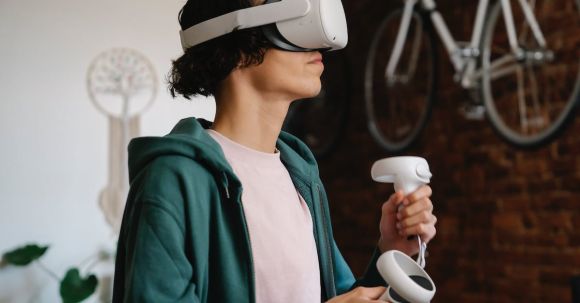In recent years, augmented reality (AR) has emerged as a powerful technology that has the potential to reshape various industries. One area where AR is making a significant impact is e-commerce shopping. With the ability to overlay virtual objects onto the real world, AR has the potential to revolutionize the way people shop online. In this article, we will explore the various ways in which augmented reality could reshape e-commerce shopping.
Enhanced Product Visualization
One of the biggest challenges of online shopping is the inability to physically see and interact with products before making a purchase. Augmented reality can solve this problem by allowing shoppers to visualize products in a realistic way. By using AR-enabled devices, users can see virtual representations of products in their own environment. For example, a furniture retailer could use AR to allow customers to see how a particular sofa would look in their living room. This enhanced visualization can provide a more accurate representation of the product and help users make more informed purchasing decisions.
Virtual Try-Ons
Another area where augmented reality can revolutionize e-commerce shopping is in the fashion industry. Virtual try-on technology allows users to virtually try on clothing and accessories without needing to physically be in a store. By using AR, shoppers can see how a particular outfit would look on them, without the hassle of trying on multiple items. This not only saves time but also reduces the need for returns, as customers can have a better idea of how the product will fit before making a purchase.
Interactive Shopping Experience
AR can also provide an interactive and immersive shopping experience for users. By overlaying virtual elements onto the real world, e-commerce platforms can create unique and engaging experiences for their customers. For example, a home decor retailer could use AR to create virtual showrooms where users can explore different room setups and see how various products would look in their own homes. This interactive shopping experience can increase customer engagement and ultimately lead to higher conversion rates.
Improved Customer Support
Another way in which AR can reshape e-commerce shopping is by improving customer support. With AR, customer support representatives can remotely assist customers by overlaying virtual instructions onto the real world. This can be particularly useful for complex products or installations. Instead of relying on phone calls or written instructions, customers can receive real-time visual guidance, improving the overall customer experience and reducing the likelihood of errors or misunderstandings.
Challenges and Future Possibilities
While augmented reality holds great potential for e-commerce shopping, there are still some challenges that need to be addressed. One of the main challenges is the availability of AR-enabled devices. Currently, the adoption of AR devices is still relatively low, which limits the widespread use of AR in e-commerce. However, as technology advances and AR devices become more affordable and accessible, we can expect to see a greater integration of AR in the e-commerce industry.
In conclusion, augmented reality has the potential to reshape e-commerce shopping in numerous ways. From enhanced product visualization to virtual try-ons and interactive shopping experiences, AR can provide a more immersive and engaging shopping experience for users. Additionally, AR can improve customer support and reduce the likelihood of errors or misunderstandings. While there are still challenges to overcome, the future of augmented reality in e-commerce is promising, and we can expect to see more innovative uses of AR in the coming years.





